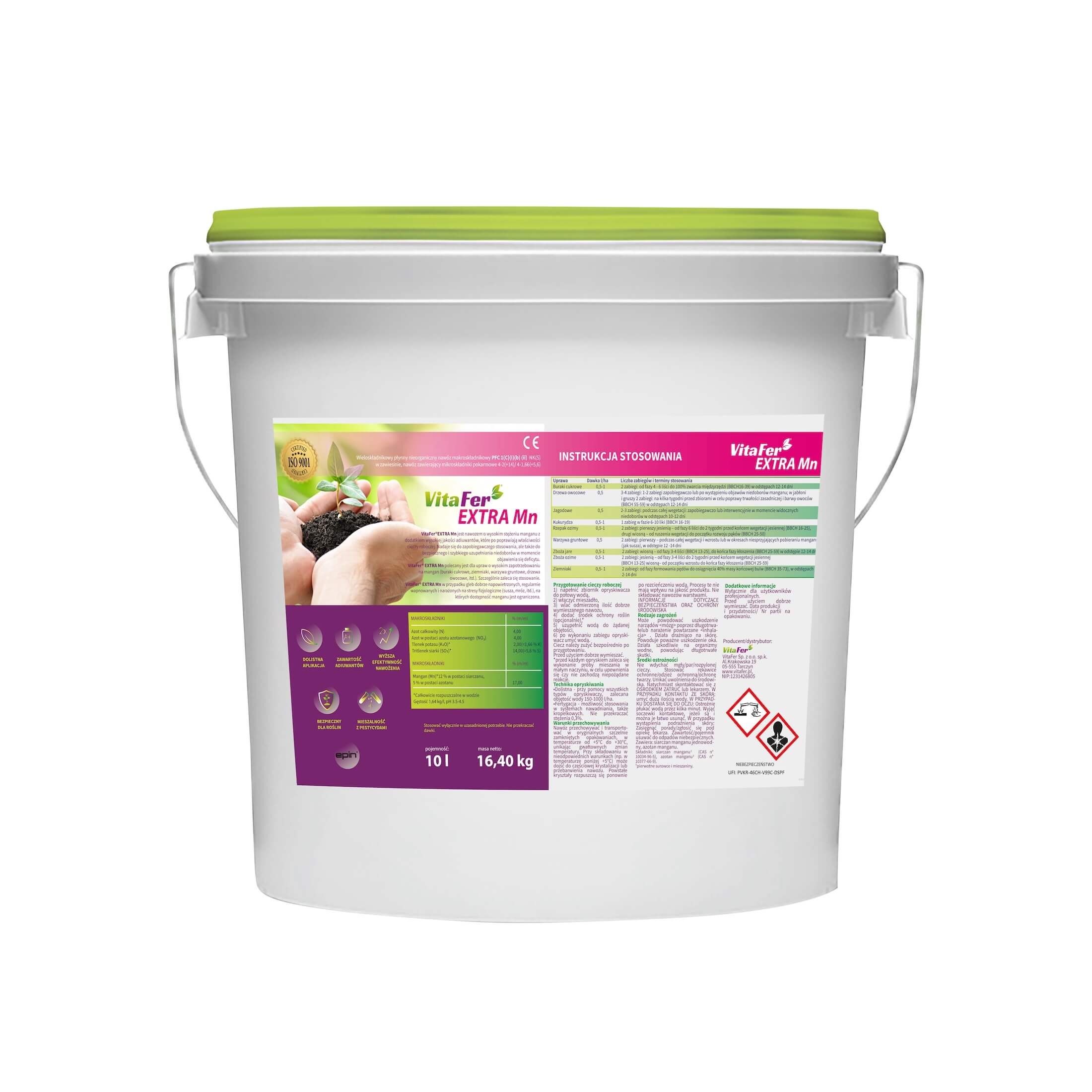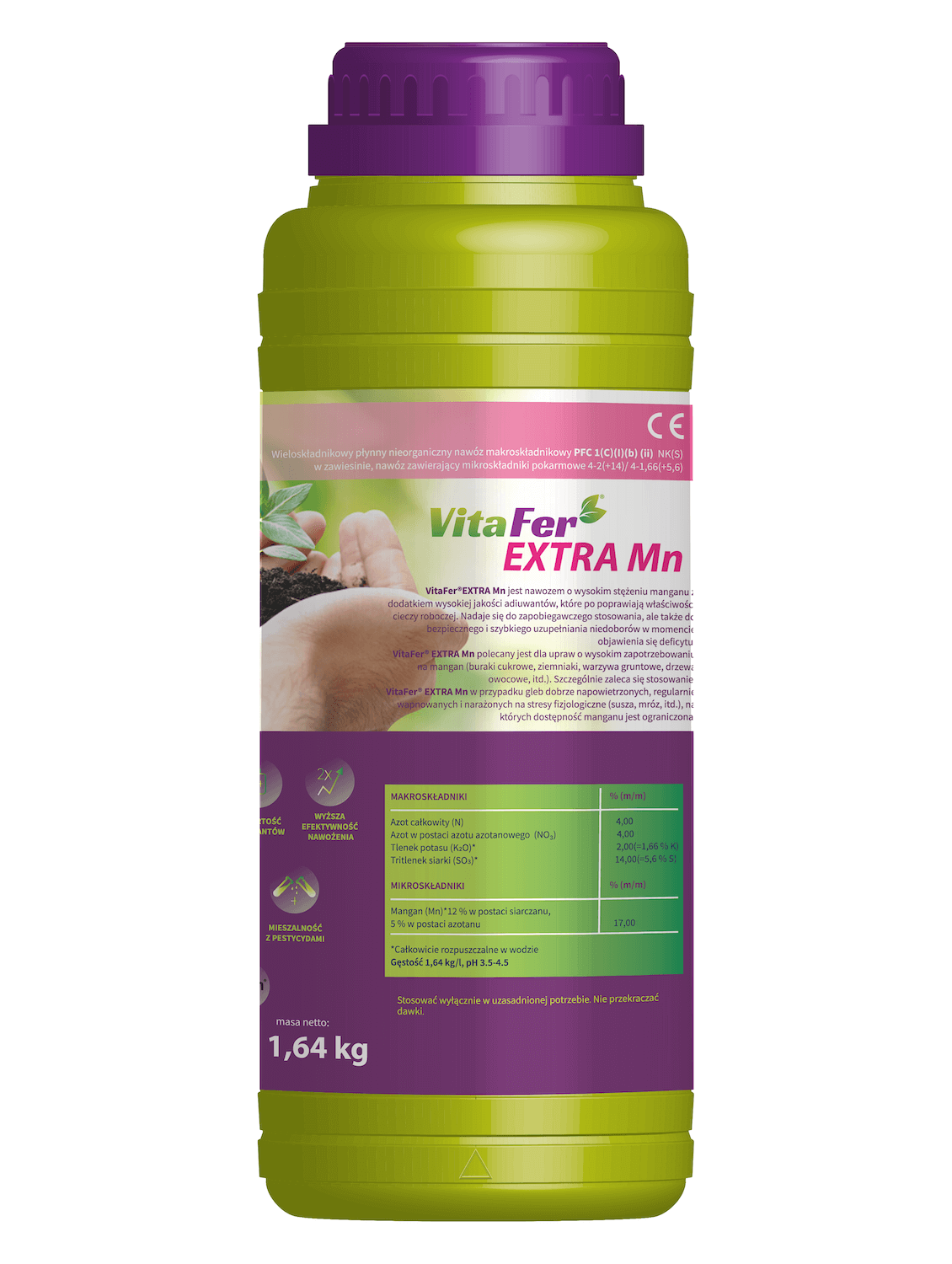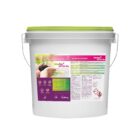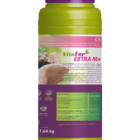Description
Recommendations for use:
– For crops with a high manganese requirement: sugar beets, potatoes, field vegetables, fruit trees, maize, cereals, legumes
– In dry years or on dry soils to increase resistance to stress conditions.
– In order to compensate for the Mn deficit when it occurs
– To increase frost resistance
– To increase resistance to abiotic and biotic stress conditions: drought, disease-causing pathogens
– To improve yield quantity and quality
Do not mix with phosphorus, potassium, silicon and boron fertilisers. For other foliar fertilisers and pesticides, a mixability test should be carried out before application.
| MACROELEMENTS | % weight | % volume |
|---|---|---|
| Nitrogen (N) | 4.00 | 6.56 |
| Potassium (K2O) | 2.00 | 3.28 |
| Sulfur (SO3) | 14.00 | 22.96 |
| MICROELEMENTS | % weight | % volume |
| Manganese (Mn) | 17.000 | 27.880 |
The role of manganese in crops:
- has a positive effect on the nitrogen balance of the plant by, among other things, preventing excessive nitrate accumulation in the plant.
- increases the amount of vitamin C
- influences protein synthesis in the plant
- improves root system morphology by stimulating phosphorus uptake
- increases frost resistance
- improves tolerance to stress conditions – especially drought
- has a toxic effect on certain soil pathogens, thereby reducing disease pressure
- by activating enzymes, improves photosynthesis and increases the amount of chlorophyll in the leaves.
Manganese deficiencies result in:
- Mottled chlorosis on young leaves
- Inhibition of plant growth
- Yellowing of leaves and appearance of brown spots between nerves
- Stunted root growth
- Partial leaf dieback
- Reduced plant uptake of nitrogen and phosphorus
Dosage and timing of application
| Crop | Dose (l/ha) | Number of Treatments and Application Timing |
|---|---|---|
| Sugar Beet | 0.5-1 | 2 treatments: from the 4-6 leaf stage to 100% canopy closure (BBCH 16-39), at intervals of 12-14 days |
| Fruit Trees | 0.5 | 3-4 treatments: 1-2 treatments as a preventative measure or after symptoms of manganese deficiency; 2 treatments in an apple or pear tree: a few weeks before the harvest to improve the basic stability and colour of the fruit (BBCH 55-59), at intervals of 12-14 days |
| Berries | 0.5 | 2-3 treatments: throughout the vegetation: preventively or by intervention at the time of visible deficiency, at intervals of 10-12 days |
| Maize | 0.5-1 | 1 treatment at the 6-10 leaf stage (BBCH 16-19) |
| Winter Oilseed Rape | 0.5-1 | 2 treatments: first in autumn – from the 6 leaf stage to 2 weeks before the end of autumn vegetation (BBCH 16-25), second in spring – from the start of vegetation to the beginning of bud development (BBCH 30-51) |
| Field Vegetables | 0.5 | 2 treatments: first during the entire vegetation and growth period or in periods unfavorable for manganese uptake (such as drought), at an interval of 12-14 days |
| Spring Cereals | 0.5-1 | 2 treatments: in spring – from the 3-4 leaf stage (BBCH 13-25), until the end of the earing stage (BBCH 25-59), at an interval of 12-14 days |
| Winter Cereals | 0.5-1 | 2 treatments: in autumn from the 3-4 leaf stage to 2 weeks before the end of autumn vegetation (BBCH 13-25), in spring from the start of vegetation to the end of the earing stage (BBCH 25-59) |
| Potatoes | 0.5-1 | 2 treatments: from the shoot formation stage until 40% of the final weight of the tubers is reached (BBCH 35-73), at intervals of 12-14 days |
Fertigation – not to exceed a concentration of 0.3%









